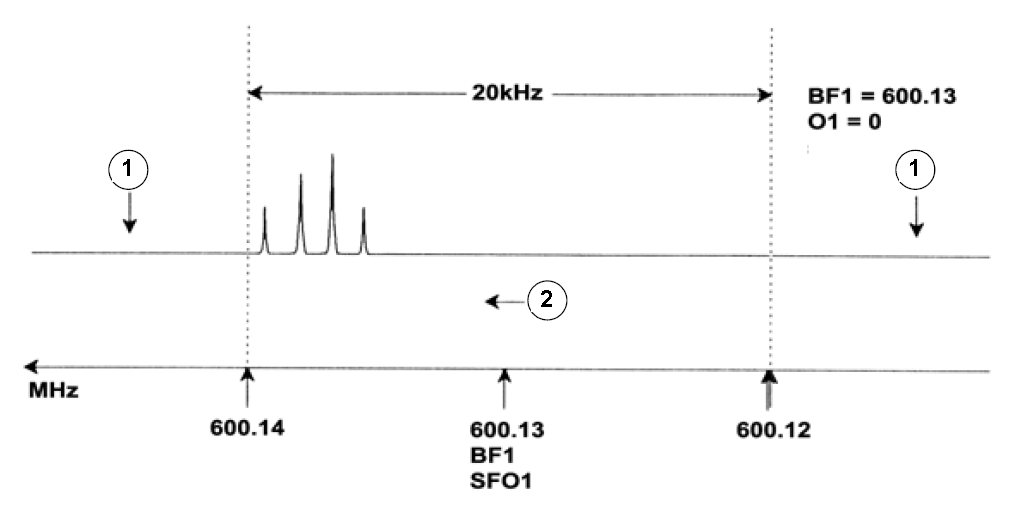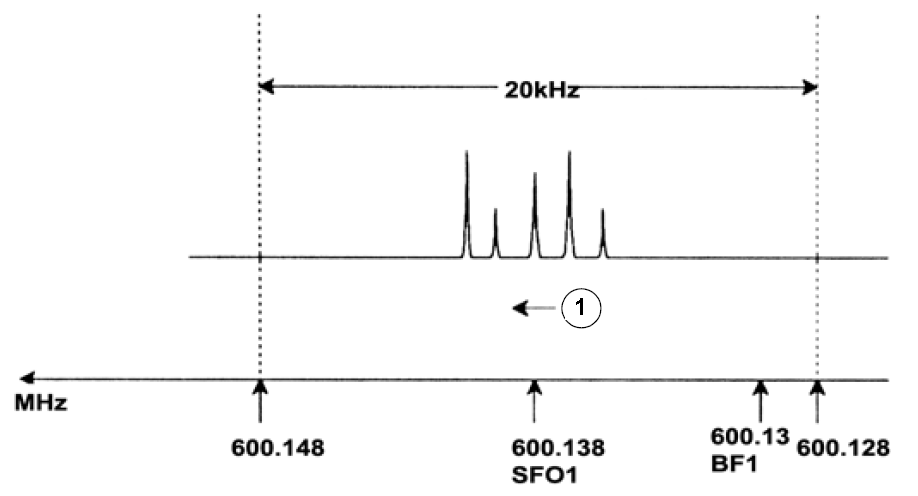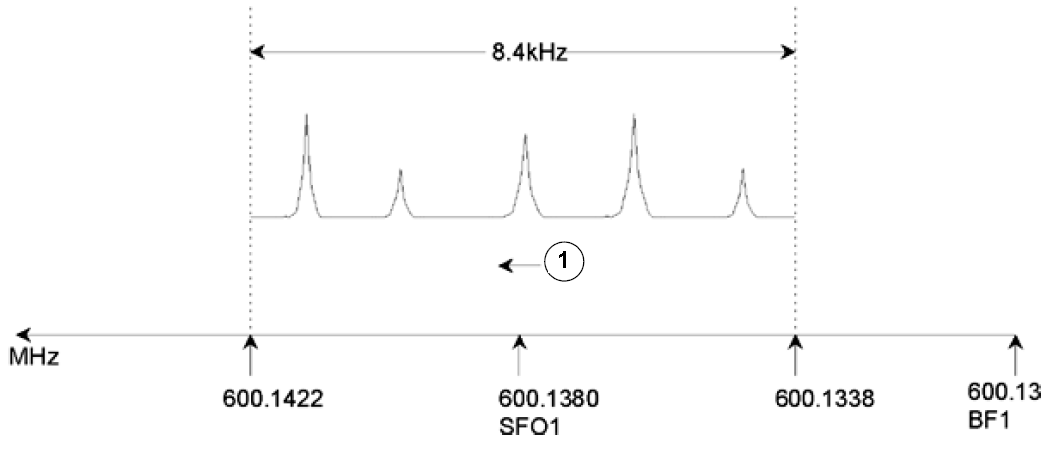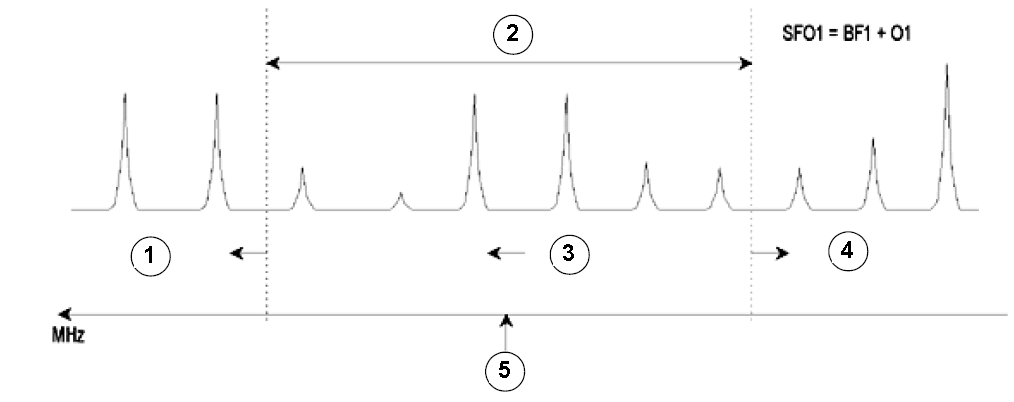Numerical Explanation of Transmitted, Basic and Offset Frequencies
Consider a 600 MHz spectrometer used to observe hydrogen. The spectrometer is configured to have a BF1 of 600.13 MHz (a 500 MHz spectrometer normally has a BF1 of 500.13 MHz, a 400 MHz a BF1 of 400.13 etc.).
If O1 is set to zero then: SFO1 = 600.13 + 0 = 600.13 MHz
Thus the spectrum center would lie at 600.13 MHz. If SWH was set to 20 kHz, the spectrum might look like in the picture below.
Spectrum with BF1 = 600.13 MHz, 01 = 0 Hz
It is clear from our hypothetical spectrum that the NMR signals all appear towards the high frequency end of the spectral width. Furthermore it is possible that some signals may appear above 600.14 MHz and since these signals are outside the spectral window they have been filtered out and are not observed. To check for the presence of such signals two options are available:
- ▪
- The spectral width could be increased to encompass any missing signal. This however has disadvantages such as increasing the FID resolution (the lower the value of FIDRES, the better the resolution).
- ▪
- The preferred option would be to leave the spectral width unchanged, but assign a value to O1 to shift the center of the window.
In our example, the detected signals all appear in the region of 600.138 MHz and we wish to center the spectrum at this frequency.
=> SFO1 = 600.138 = BF1 + O1
=> 600.138 = 600.13 + O1
=> O1 = 0.008 MHz = 8 kHz
Hence if O1, the offset frequency, is set to 8 kHz, the window is shifted to look like that in the figure below.
Spectrum with BF1 =600.13 MHz, 01= 8 kHz
Finally it is clear from the figure above that the NMR signals emitted by the protons in our hypothetical sample occupy only part of the spectral width. Therefore the spectral width could be reduced without any loss of relevant data. One advantage of decreasing the SW is that the spectral resolution is improved. The disadvantage is that the time taken to acquire the data is proportionally increased.
In Introductory Theory and Terminology, it was stated that the chemical shifts of protons rarely exceed 14 ppm. This corresponds to 8.4 kHz on a 600 MHz spectrometer. The figure below shows the hypothetical spectrum redrawn with the value assigned to SWH reduced from 20 kHz to 8.4 kHz.
Spectrum with BF1 = 600.13 MHz, 01 = 8 kHz, SWH = 8.4 kHz
It should be noted that the value of SWH used in any given experiment is determined only by the sample under analysis and the required spectral resolution. The value of 14 ppm for hydrogen spectra will ensure that most proton signals are detected. For a detailed study of a particular signal, however, much smaller values of SWH are used.
The figure below illustrates the general principles of how SFO1, BF1 and O1 interact (here shown with a new sample).
Interaction of SFO1, BF1 and O1





